

- The car’s breakthrough in France
- In 1902 the Paris Motor Show becomes the ‘Mercedes Show’
- Launch of the S-Class in Paris in 1972
Stuttgart – Mercedes-Benz and France have enjoyed a very special relationship right up to the present day: the Stuttgart-based manufacturer i.e. has remained true to the Salon Mondial de l’Automobile (International Motor Show) in Paris since it was introduced in 1898 and has time and again celebrated great premieres, especially with models of the luxury class.
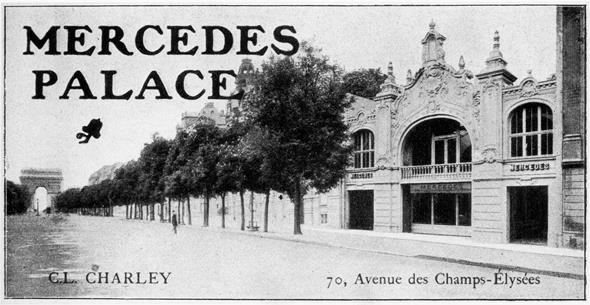
This constant presence also reflects the fact that vehicles of the luxury segment were the focus of the German brand’s product line long before ‘S-Class’ became the official designation:
Mercedes-Benz and the predecessor brands have always been synonymous with luxury, comfort, and safety.

In 1972, Paris also became the stage for the official launch of Stuttgart’s world-famous luxury class: with the top-of-the-range models from Mercedes-Benz having already borne the ‘S’ in their model designations for many years, the 1972 Motor Show in Paris was to be the first time that the German automotive manufacturer officially presented an ‘S-Class’ to the public. Internally, this vehicle was known as the 116 model series.
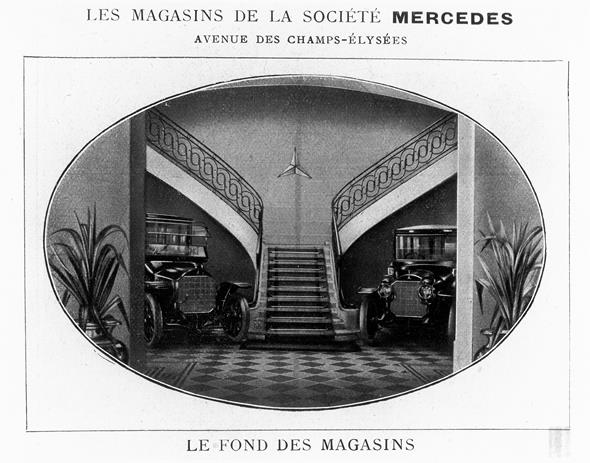
Breakthrough in France
France has played a crucial role for Mercedes-Benz from the outset. The automobile was invented in 1886 practically simultaneously by Carl Benz and Gottlieb Daimler in Germany. But the new form of transportation owed its first successes and final breakthrough to our French neighbours: while initially viewed with scepticism by the Germans, the automobile was more than welcome to sophisticated Parisian society, with its enthusiasm for technology.
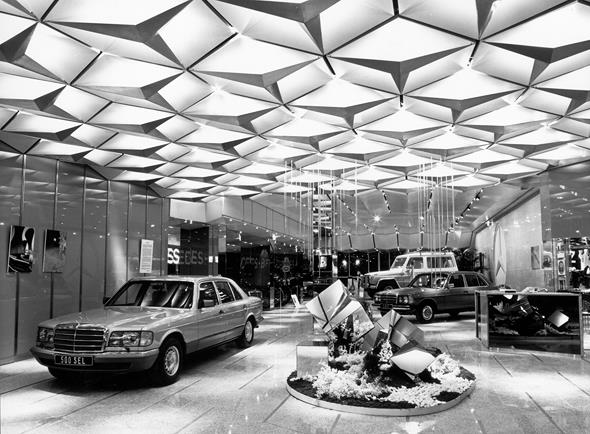
For good reason an internal document of the Daimler-Motoren-Gesellschaft (DMG) from 1902 referred to France as the ‘leading country of automobiles’, since ‘in no other country has the automobile gained even remotely as much ground’.
As early as 1898 the Automobile Club de France, established in November of 1895, organised the first international motor show in Paris on the terrace of the Jardin des Tuileries, running from 15 June to 3 July. Nearly 140,000 people attended the show to admire the 232 vehicles on display. To convince visitors of the efficiency of the new means of conveyance, vehicle manufacturers presented the new vehicles in test drives at Versailles, about 20 kilometres away.
In January 1899, the magazine Der Motorwagen wrote about this exhibition: ‘At this outstanding display of petrol-driven motor cars we should acknowledge the merit earned by the German engineers Benz in Mannheim and Daimler in Cannstatt for the introduction as well as, in part, for the dissemination of these vehicles in France, as is also unhesitatingly acknowledged here, both in the specialist literature and by the concerned industrialists themselves.’
The two German engineers may indeed be considered the founders of the French automotive industry: both had already presented their vehicles with the aid of French business associates at the 1889 World Exhibition in Paris.
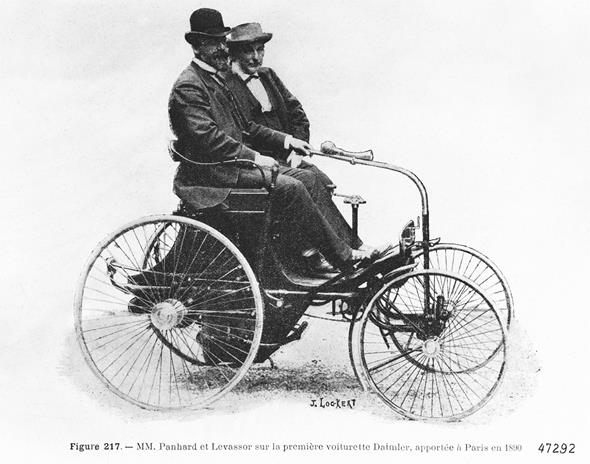
While the agent Emil Roger significantly contributed to the dissemination of the Benz automobile before the turn of the century, the French firms of Panhard & Levassor and Peugeot installed the Daimler engines built under licence at Panhard & Levassor in their own vehicles, so that the two firms qualify as the first motor car manufacturers in France.
‘The Daimler-Motorengesellschaft brought two Victoria cars and a heavy-duty lorry with a cargo capacity of five tons to the exhibition,’ reported Der Motorwagen in its February 1899 edition on the first Motor Show in 1898 in Paris. ‘With their smooth operation and power, these items may be said to outshine the French products to a fair extent.
’ Benz automobiles were also on hand at the first Paris Motor Show: ‘Maison Parisienne in Paris has exhibited a number of quite lovely cars with two to twelve seats. This firm brokers mainly the sale and installation of engines from Rheinische Gasmotorenfabrik Benz & Co. (Mannheim) in France and has achieved the same quite considerable success for the parent company.’
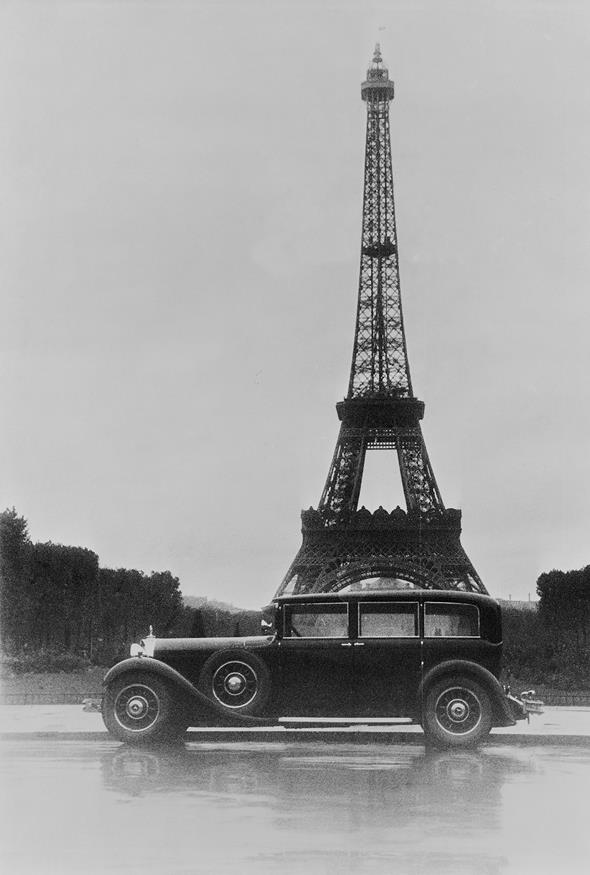
At the turn of the century, France again became the place where the vehicle – which was revolutionising individual mobility – received a proper portion of glamour. This development was especially the work of the Austrian businessman Emil Jellinek, who brought the German luxury class cars closer to the French and moreover gave these vehicles the brand name ‘Mercedes’.
As an entrepreneur well-known in Nice, he began promoting Daimler vehicles in the upper levels of society in 1898. Baron Rothschild and other prominent figures purchased cars from him.
By the time of Gottlieb Daimler’s death in 1900, Jellinek had sold the considerable number of 34 cars in this way, while demanding from the Daimler-Motoren-Gesellschaft and its head designer Wilhelm Maybach ever-higher levels of maximum technical performance.
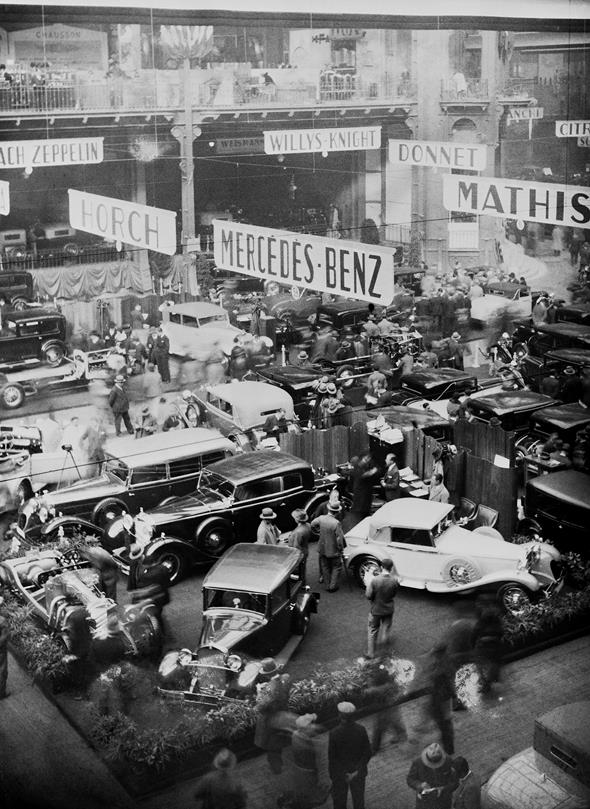
Birth of the Mercedes brand
With his talent for marketing and sales, Jellinek finally managed to convince DMG that the future of the automobile lay in speed and elegance. ‘At the time I appeared on the scene, Daimler cars were solid, usable and operationally safe, but merely theoretical vehicles,’ quotes Jellinek’s son Guy.
In speed he saw not the incentive to be incautious, but rather the actual point of driving a motor vehicle: ‘If I can’t get more out of an automobile than out of a team of horses, then I may as well go with the horses!’.
In April 1900, Jellinek and DMG reached an agreement on the sale of vehicles and the development of a new engine under the product designation ‘Mercedes’ – named after Jellinek’s daughter, born in 1889. Soon afterwards, within a few weeks, Jellinek ordered a total of 72 vehicles of different performance levels from DMG, which in 1900 was a truly large order. The Stuttgart-based firm delivered the first vehicle equipped with the new engine, a Mercedes 35 hp, to Jellinek on 22 December 1900.
This new ‘Mercedes’ developed by Wilhelm Maybach created quite an uproar at the beginning of the 20th century: at the time, it was the most advanced model in the world and even today qualifies as one of the first modern automobiles. As early as 4 January 1901, L’automobile-Revue du Littoral published an article stating: ‘There’s something new to see at present, not in Paris, but in Nice.
The first Mercedes vehicle to be built in the Cannstatt workshops has arrived in Nice and has been put on display for all drivers, thanks to the generosity of its owner, Mr Jellinek. We have to admit that the Mercedes car is very, very interesting. This remarkable vehicle will be a fearsome competitor in the 1901 races.’
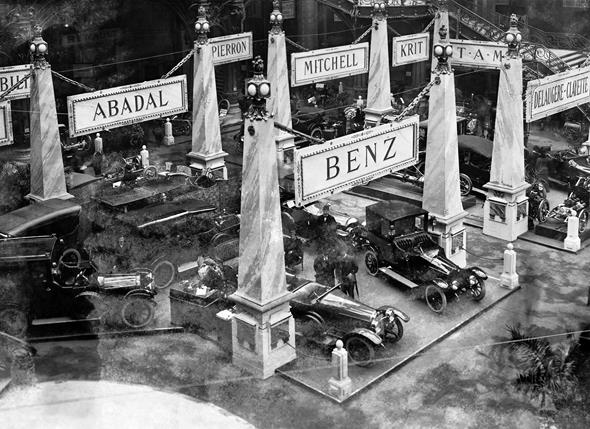
The journalist would prove to be right: the German cars indeed showed their mettle with numerous successes during the Nice racing week in late March of 1901. Jellinek himself entered the competition under the pseudonym of ‘Monsieur Mercédès’.
The successes of the new car equally impressed the public and the experts. Paul Meyan, the General secretary of the French Automobile Club, also recognised the new supremacy of the German Mercedes automotive brand on the race tracks that had been dominated for so long by French makes: ‘Nous sommes entrés dans l’ère Mercédès’ (we have entered the Mercedes era), he wrote after the Nice Week of 1901.
Wilhelm Maybach, who Jellinek was convinced could ‘invent on command’ and who was celebrated by the French as the ‘King of Designers’, continued developing the automotive design: as engine power and maximum speeds increased, so did production and unit sales. Of the improved models, called Mercedes Simplex as of 1902, 232 cars were already produced in 1903, 698 during the next year and even 863 in 1905.
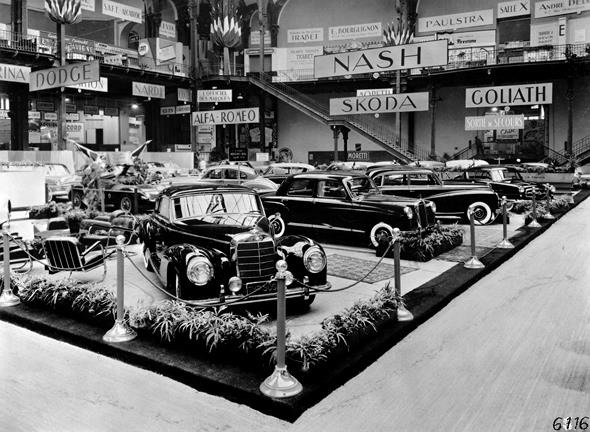
The Mercedes-Benz Classic collection contains an especially spectacular exhibit of the brand’s top model at that time and an impressive example of the long tradition behind today’s S-Class: the elegant and luxurious touring sedan of 1904 comes from Emil Jellinek’s personal collection.
A ‘taste for Mercedes’ in France
By the turn of the century, the automobile was generating such enthusiasm in France that the previous exhibition site no longer offered enough space. The Paris Motor Show therefore relocated at the end of 1901 to the exhibition area of the Grand Palais on the Champs-Elysées.
The largest preserved glass palace of today was built in 1900 for the Paris Exposition Universelle and afforded the burgeoning automotive industry a thoroughly glamorous forum: the main Art Nouveau hall is 240 metres long and 40 metres high, and covered by a 15,000 square-metre glass roof.
The 1902 Motor Show literally glistened, as the Salon of electric light. 230,000 visitors marvelled at both the lighting arrangements and the cinematographic demonstrations. Among the automotive exhibits, foreign makes like Mercedes especially impressed and stirred the interest of the public.
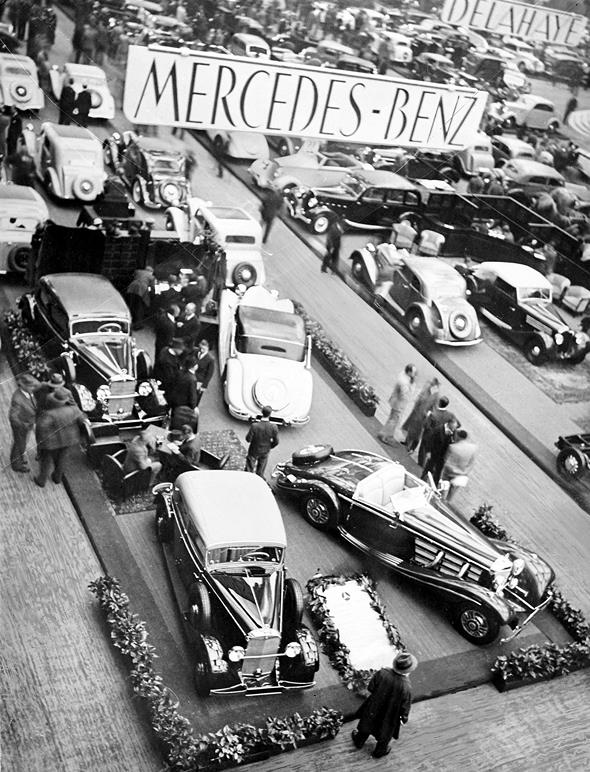
‘For the first time since the French have been holding their annual automotive exhibition, they’ve had to cope with powerful foreign competition,’ reported the Allgemeine Automobil Zeitung on the 1902 Paris Motor Show. ‘It was above all the Mercedes vehicles that were a thorn in the side of the French, followed by Benz with its new, modern model.’ The magazine Der Motorwagen even found the Paris Motor Show to reveal a ‘taste for Mercedes now absolutely prevailing in France’.
In a 1933 retrospective, the Automobil-Rundschau again recalled the special status in Paris of the top-of-the-line automobiles from Germany. ‘For the German motor vehicle industry the show in any event proved to be a crucial turning point: a German product had now taken the lead in the international automotive market,’ the magazine wrote in reference to the 1903 Paris Motor Show. ‘People are copying Mercedes.
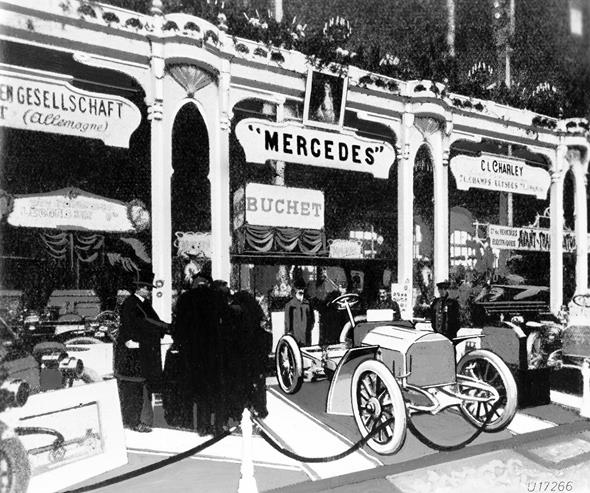
There are practically no cars without a Mercedes top, no engine without controlled exhaust valves, without a magneto ignition, without Mercedes cooling. All in all: a Salon de Mercedes, as one French trade paper aptly remarked.
’ The article continues with great exuberance: ‘Mercedes automobiles from the Cannstatt factory are by far the most significant items in the show, and their impact on the entire French industry cannot be denied. There follows Benz of Mannheim with its own successful automobiles that are in no way inferior to the best French products.’
In subsequent years the Mercedes-Benz stand at the Paris Show continued to be the scene of important premieres: in 1928, the first 8-cylinder model from the long-established brand debuted as the Mercedes-Benz Nürburg 460, and in 1930 the 770 model, or ‘grand Mercedes’, had its world premiere.
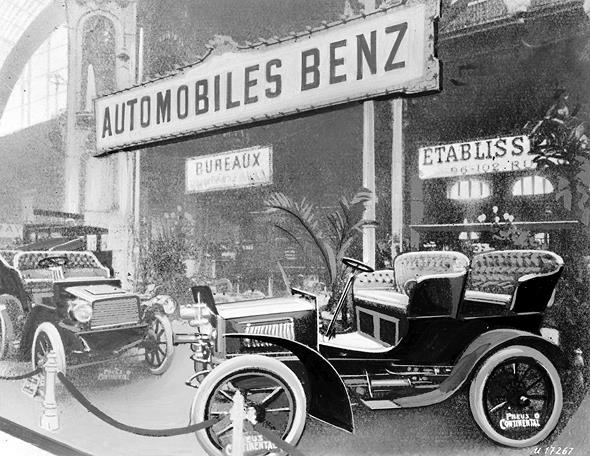
The new Mercedes-Benz top model quickly became the preferred official vehicle for both royal and non-royal heads of state as well as for representatives of industry and high finance.
Presentation of the first S-Class in Paris in 1972
While the ancestors of today’s S-Class repeatedly impressed the public at the Paris Motor Shows, the first model range officially bearing the name ‘S-Class’ followed suit 40 years ago.
In October 1972, Mercedes-Benz celebrated a double-premiere at the 59th Salon de l’Automobile in Paris with the 116 model series: together with the new model range, the brand from Stuttgart established a new name. The luxury class sedans have since been officially designated the ‘Mercedes-Benz S-Class’.
While the letter ‘S’ had appeared in the model designations of Mercedes-Benz luxury class models since 1949, ‘S-Class’ now became the incisive term for an entire family of models.
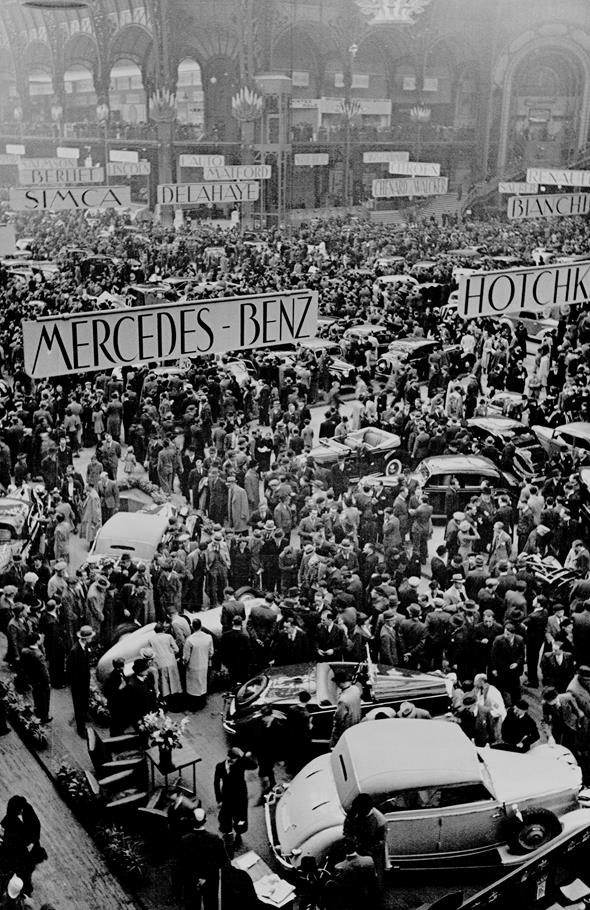
‘The new S-Class is the result of many years of theoretical and practical development work which, based on the established findings of the preceding model series together with the latest and state-of-the-art technological achievements, has disclosed new dimensions in the automotive sector,’ according to the 1972 Paris Motor Show press kit, whose front cover simply read:
‘Mercedes-Benz presents: the new S-Class’.
‘The vehicles which, besides superior performance, well-balanced handling characteristics and comfortable luxury, afford the utmost active and passive safety, have adopted many elements of the elaborate project studies C 111 and ESF 5 as well as ESF 13 (Experimental-Sicherheits-Fahrzeug).
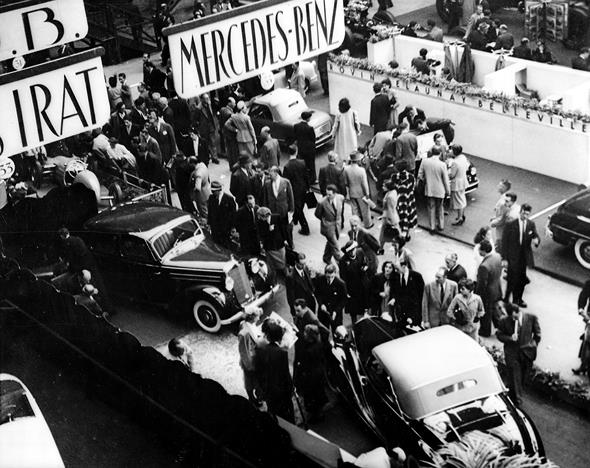
A new class is accordingly setting standards that will continue to apply in years to come,’ stated Mercedes-Benz on this occasion in emphasising its tradition as the unrivalled manufacturer of luxury class vehicles.
Through its S-Class, Mercedes-Benz remained closely associated with the Paris Motor Show in subsequent decades as well. For example, in October 1992 among other models, the Stuttgart manufacturer presented the 300 SE 2.8 and 300 SD turbo diesel at the show, adding two less expensive and especially economical variants to the S-Class line.
Interest was also stirred by the 300 SD, which while already being exported to the USA since October 1991, now became the first diesel model of the S-Class to also be available in Europe. Besides the two new models, the eight-cylinder and twelve-cylinder versions with re-designed engines were also presented in Paris.
All three major assemblies dispense with mixture enrichment at wide open throttle, which led to slightly reduces power but better emissions characteristics.
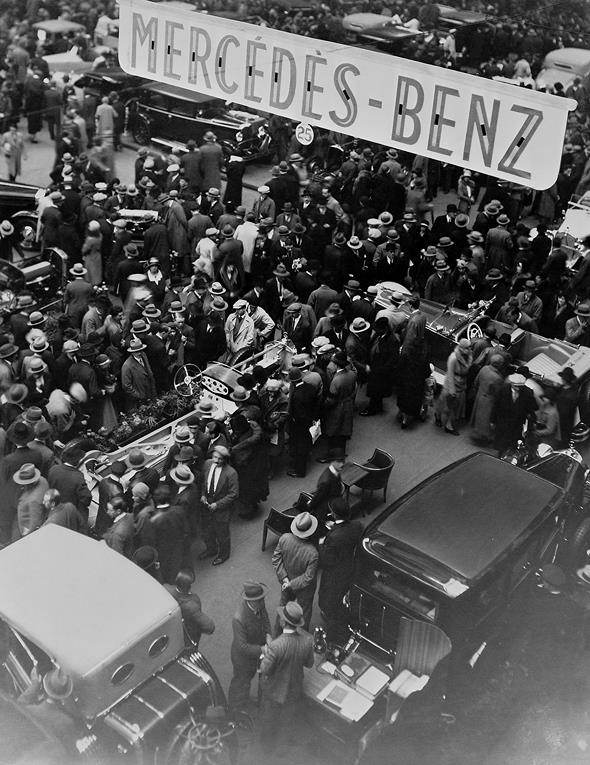
New S-Class for the Motor Show’s centennial
For the 100th anniversary of the French show so rich in tradition, the Stuttgart brand couldn’t let the opportunity escape of once again celebrating an S-Class premiere there: at the 1998 Paris Motor Show Mercedes-Benz presented the new S-Class of the 220 model series to the world’s public; it was the successor to the 140 model series after seven and a half years of production.
‘Altogether the new S-Class owes its attractiveness to the classical virtues of a Mercedes-Benz – to the combination of reason and emotion. It guarantees serenity through trusted strength in comfort and safety, and guarantees pleasure through an elegant design and well-balanced ride characteristics,’ explained Dr Dieter Zetsche, at the time a Member of the Board of Management of Daimler-Benz AG responsible for Sales, on the occasion of the presentation of the new member of the luxury class in Paris.
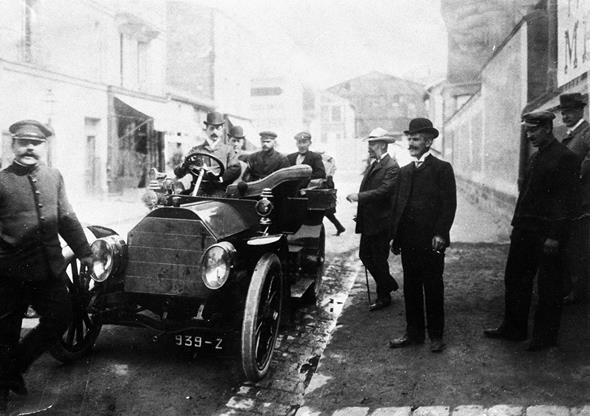
‘With its elegant appearance and its many technical innovations, the new Saloon will continue the worldwide successes of the predecessor model, which was manufactured a total of over 407,000 times and in past years has achieved an average share of 42 per cent of the world market in its segment,’ boasted the press release for the Paris Show.
‘Just like the predecessor model, the new S-Class will also be a trendsetter for the entire field of passenger car technologies. The new Mercedes Saloon implements over 30 technical innovations, for which Daimler engineers have filed a total of 340 patents. A large part of the innovations offered by Daimler-Benz as the first car manufacturer worldwide, are standard on the S-Class.’
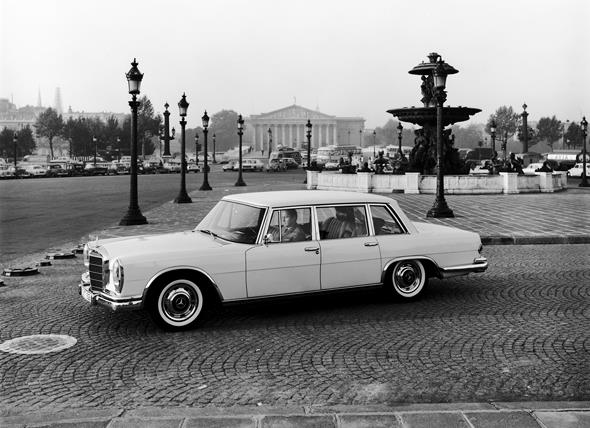
The new features included the COMAND operating and display system and the innovative DISTRONIC autonomous intelligent cruise control, for example. But the keyless access and drive authorisation system, KEYLESS-GO and AIRMATC, an air suspension system that automatically adapts the action of the dampers at all four wheels to the given road and load conditions as well as to the driving style through active dampening and level control in the front and rear, also belong to the innovative highlights of this model series.
At the Paris Motor Show’s centennial, the motto of the new S-Class, ‘Sense and Sensibility’, also applied to the architectural and technical presentation of the Mercedes-Benz brand: besides the vehicles, the Stuttgart manufacturer’s exhibition also presented fascinating live performances and artworks from the eleven most prominent art schools that had turned their attention to the new S-Class.
A new era in automotive safety
Mercedes-Benz also highlighted technical innovations of the subsequently face-lifted S-Class at the 2002 Motor Show in Paris. ‘The world’s number one luxury class Saloon also stays in the fast lane technically and stylistically in model year 2003: at the Paris Motor Show, Mercedes-Benz is presenting an S-Class that’s even more attractive and innovative thanks to modifications of many details,’ as the manufacturer pointed out in the press kit.
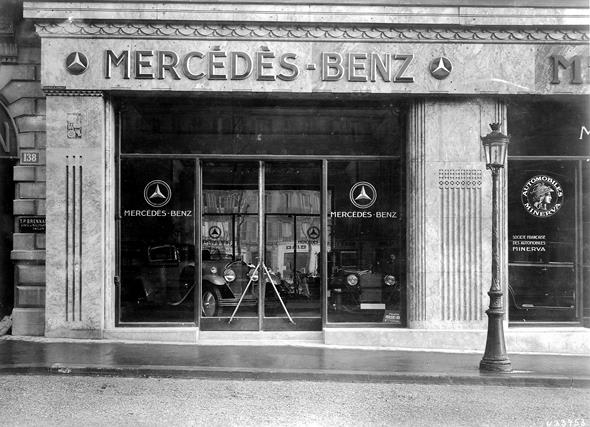
‘At the top of the new trend-setting high-tech innovations is the PRE-SAFE preventive occupant protection system, with which Mercedes-Benz has launched a new era in automotive safety.’ The system can detect a potential accident in advance and pre-emptively prepare occupants and the vehicle in seconds – by automatically correcting the seat positions and tensioning the seat belts, for example, for optimal airbag function.
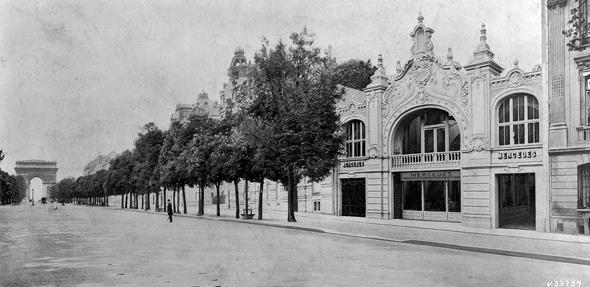
The very special relationship between Mercedes-Benz and the Salon Mondial de l’Automobile in Paris has continued without interruption to the present day. 115 years after the debut and 40 years after the presentation of the S-Class from model series 116 in Paris, Mercedes-Benz presented the sculpture ‘Aesthetics S’ at the 2012 Show: stirred to life by state-of-the-art lighting technology, the artwork gives viewers a foretaste of the new edition of Mercedes-Benz’s top model.
The stylistic idiom presented in Paris already clarifies what will also distinguish the design of the new S-Class: ‘its timelessness and constant modernity’ in the words of Mercedes-Benz Head Designer Gorden Wagener, speaking in Paris.





